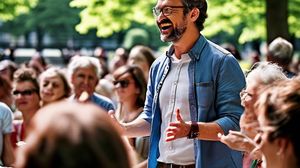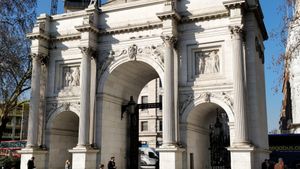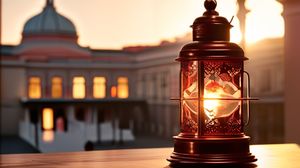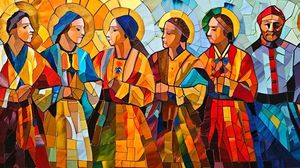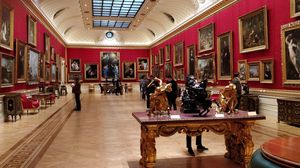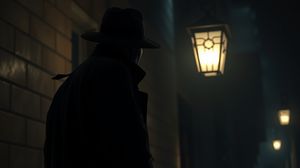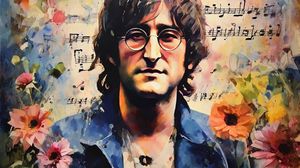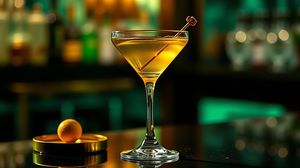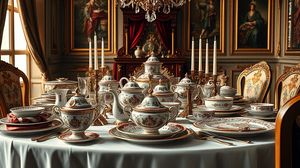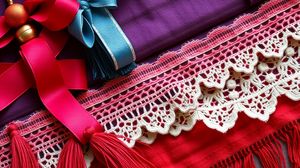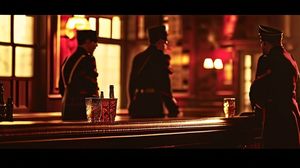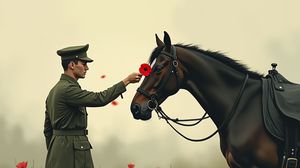
The Animals in War Memorial is a poignant tribute located at Brook Gate, Park Lane, on the eastern edge of Hyde Park. Unveiled in 2004, this monument honors the countless animals that served and perished alongside British and Allied forces throughout history, particularly during the First and Second World Wars.
The memorial features a striking design by sculptor David Backhouse. It comprises two curved Portland stone walls, symbolizing struggle and sacrifice. Walking between the gaps in the walls gives a sense of being led through the journey that these brave animals faced.
At its center, two life-sized bronze statues of mules emerge through the walls, burdened with military supplies, while a horse and a dog follow. This powerful imagery captures the essential roles that animals played, especially the often perilous tasks they undertook to support human soldiers.
One of the unique elements of this monument is the inscription that reads, "They had no choice," reminding visitors of the unquestioned loyalty and service these animals provided, often in harsh conditions and under duress.
The memorial is an educational experience that sheds light on the varied and sometimes surprising duties animals performed. From transporting ammunition to detecting mines, animals have historically been indispensable in military operations.
A lesser-known fact is that during the World Wars, animals such as elephants and camels were also used for carrying heavy loads where machinery could not function effectively, showcasing the extraordinary ways animals have been employed in armed conflicts.
Visiting this memorial not only offers a chance to pay respect to these unsung heroes of war but also prompts a reflection on the bond between humans and animals, and their shared experiences in times of conflict.

Making the Most of Your Visit:
Arrive early or visit late in the afternoon for a quieter experience. The memorial is located at a busy intersection, Park Lane, and visiting during off-peak times allows for a more reflective and personal engagement with the sculptures and inscriptions without the noise of traffic or crowds.
Spend a moment reading the detailed inscriptions on the memorial. Each section tells a different part of the story and reveals the various roles that animals played during wartime. It's easy to walk by without noticing these, but they add depth to the experience.
If you're with children, engage them by discussing the stories of specific animals during the wars. Whether it's the pigeons used for communication or the horses that were vital on the battlefield, these stories can really captivate young imaginations and make the visit more memorable.
Take a short walk from the monument towards Hyde Park. It's a wonderful opportunity to continue reflecting in a peaceful environment and consider the broader context of how animals have contributed beyond wartime, blending the urban with the naturalistic landscape of the park.
Photographers might want to capture the memorial during the golden hour when the natural sunlight creates striking shadows, emphasizing the textures of the bronze statues and Portland stone walls. It's a beautiful way to appreciate the artistic aspect of the memorial.

Visiting Times & Costs:
The Animals in War Memorial is open to the public all year round. As an outdoor monument, it is accessible at any time of the day or night.
There is no entrance fee; visiting the memorial is free of charge.
The memorial is located outdoors, and there is excellent accessibility for visitors, including those using wheelchairs or with mobility challenges.

Address & Map:

Nearby:
